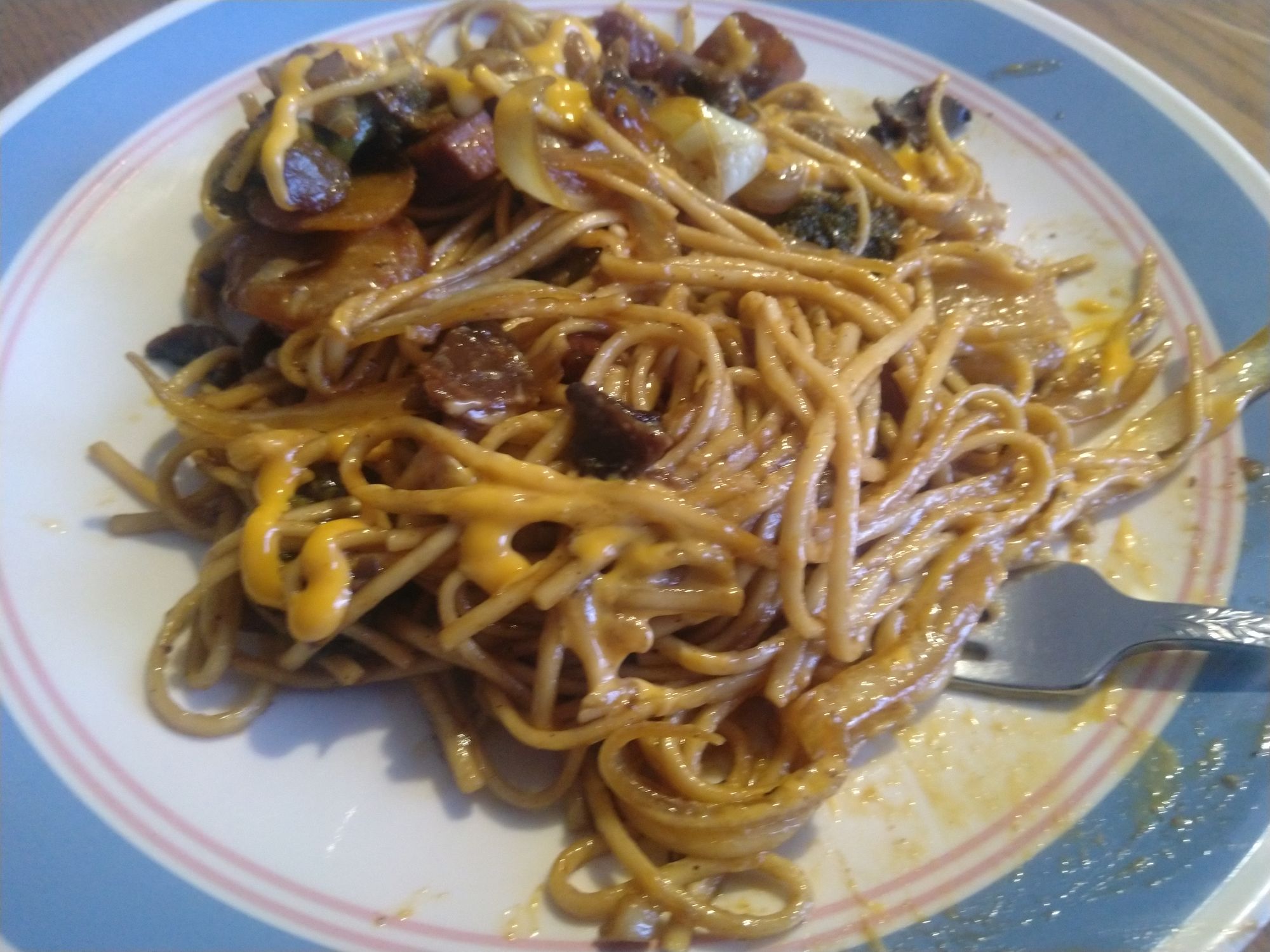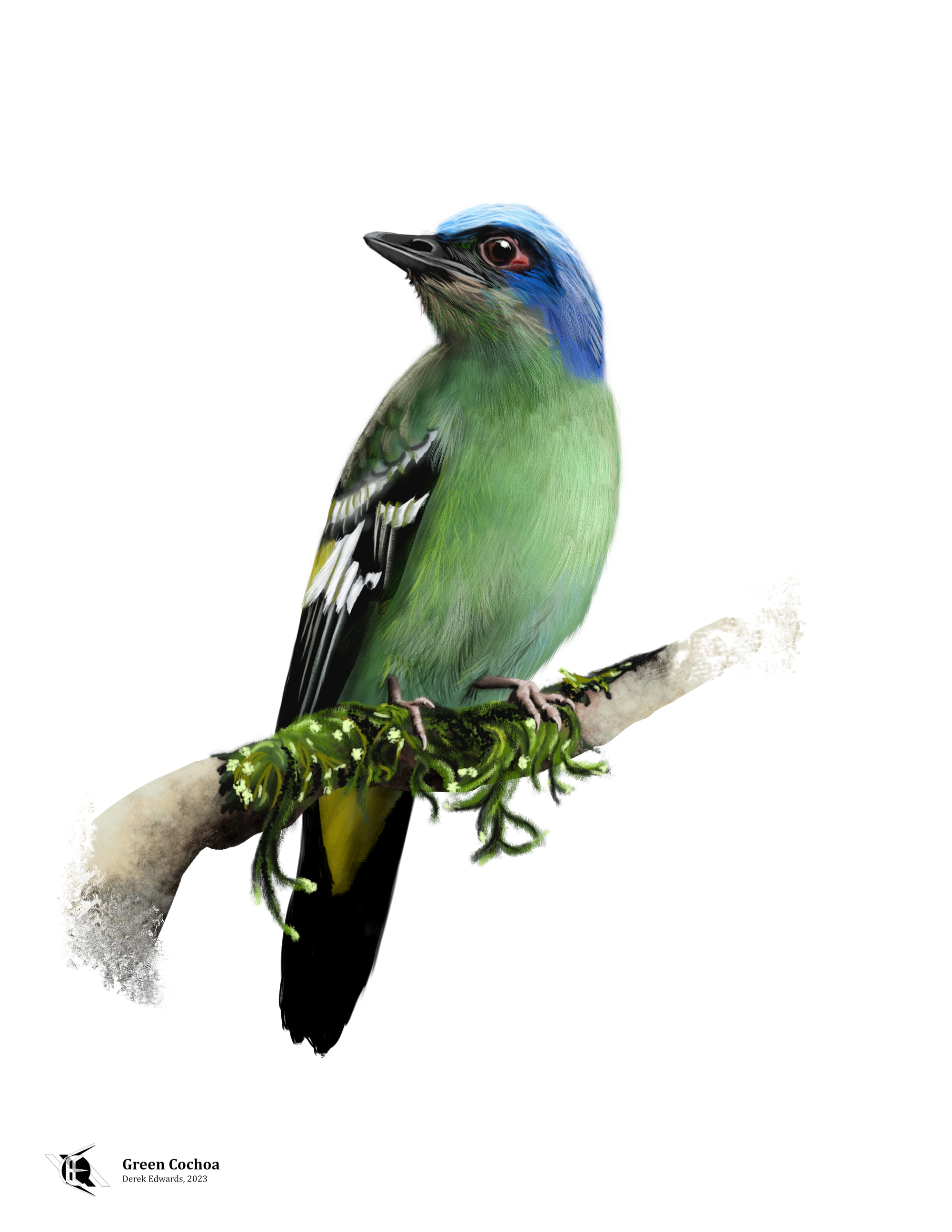
Running Commentary 6/5/2023
Hello,
This week we kick off our look at Volume 2 of Star Wars: Visions. There are nine shorts, which matches the number of Mondays in June and July this year. Sometime in August Ahsoka will premiere, though I doubt it does the first week. I'm sure I'll find something to cover until then.
Anyway...
Watching...
The Big Year
After hearing that I should from a lot of people, I finally watched The Big Year, a birding comedy from 2011. I'm going to write a full review of it, but for now, just know that I really enjoyed it and would recommend it even to non-birders.

Star Wars: Visions
The first of the second volume of Visions comes from El Guiri Studios, a Spanish animation house, and is titled simply "Sith". Here are my notes:
- Once again, a volume of Visions starts off with a short about an ex-Sith. Last time "The Duel" got a spin-off novel. I don't think "Sith" will get the same. It's primarily visual in focus; the story is very thin, and the scenes are quite surreal. I don't think this take on Star Wars would make much of a book.
- This short certainly was something to look at. El Guiri is primarily a studio that does pre-production animations for other studios, so the short's sketchy, concept-art-like visual style make a lot of sense. The weird world of brush strokes and ink blobs almost made me think that the whole thing was happening in the main character's head, a metaphor for a struggle to resist the Dark Side rather than actual events.
- The lightsaber duel at the end wasn't great. The animation stayed good but the way the action was laid out was pretty confusing and lacked any big thrills.
- The two voice actors might be big names in Spain; I wouldn't know. I'm going to leave them off the List since the List is made for an American perspective.
- Overall, this was a very unique bit of animation and a good example of what Visions is for. I'm not really compelled to want more of this story, but I'm glad I saw this much, if only for the animation.
Eating...

On the odd occasion that I entertain guests, I typically fix stir-fry. It's the thing I fix best. The way I fix it, it's very much mongrel cuisine. While it's sort of rooted in northeastern Chinese meals, it's several steps removed from that origin. My stir-fry recipe was developed through trial-and-error and was based on watching the cooks at hibachi buffets (that I stopped going to when Covid hit).
Really, stir-fry is a method moreso than a recipe; I don’t measure when I do it, and the ingredient list isn't consistent either. You could swap out any or all ingredients to suit your tastes, once you get the hang of it.
Ingredients:
- 1 can reduced-sodium spam, cut into batonnets
- 1 can sliced mushrooms
- 1 can sliced water chestnuts
- 3 cups broccoli florets
- 1 onion, frenched into wide slices
- 1 cup sliced peppers
- 1 tbsp Worcestershire sauce
- 2 tbsp soy sauce
- 2 tbsp butter
- 2 tbsp pepper jelly
- 2 tbsp House of Tsang classic sauce
- 1 tsp House of Tsang Szechuan sauce
- 1 tsp Better than Bouillon beef base
- 2 TBSP minced garlic
- 1/4 tsp ground ginger
- 1/3 tsp red pepper flake
- 1/4 tsp black pepper
- 1/4 tsp ground turmeric
- 1/4 tsp paprika
- 1/2 tsp sesame oil
- 1 box udon noodles
Procedure:
1. Put a wok or similar lightweight skillet over high heat, and set a large pot of salted water to boil.
2. Crisp the spam.
3. Clear spam to the sides of the pan, and melt butter in the center.
4. Add vegetables to the center of the pan, along with Worcestershire and soy sauces.
5. Once the vegetables have cooked down a bit, add the other sauces and spices (but not the sesame oil). Stir well to combine everything.
6. Add noodles to the water. As they boil to doneness, keep stirring the wok as the excess moisture cooks out.
7. Once the noodles are cooked, drain them and add them to the wok, stirring them in. Cook until the noodles have taken the sauce on well
8. Turn off the heat, add sesame oil, and serve.

Bird of the Week
This week we have a little-known songbird of Southeast Asian forests. The Green Cochoa is a reclusive bird found in the upper-to-middle levels of tropical forests, typically close to small streams. Their namesake color and quiet nature make them a rare sight, even though they aren't thought to be particularly rare in some areas. Their call is a steady whistled note, sounding as if a ship's boatswain's mate had somehow found themselves up a tree. Males are a bit more bluish-green on the belly than females, which are more bronzy-green, with brassy-colored spots on their wing coverts. Both sexes sport blue on their caps and the upsides of their tails. The "Rothschild's cochoa" is actually a color morph of the green cochoa with a white throat and collar.
In the age of phylogenetic analysis, the thrush family has lost a lot of its former members to the Old World flycatcher family. The cochoas are a reverse of this trend, former flycatchers now classified as thrushes. Indeed, the naturalist who first described them, Brian Houghton Hodgson, said that "These birds have the wings, tail, and feet of Turdus; and if we continue the comparison from the external to the internal characters, we find a similar construction of the tongue, stomach, and intestines in both" though he noted that the cochoas bills were much stubbier than those of Turdus thrushes.
Hodgson was a British official sent to live in Nepal as a pushy sort of diplomat called a "Resident Minister". While there he learned Nepalese and pushed back on the practice of British-run schools in South Asia forcing students to learn in English rather than their native languages. That same respect for local languages is seen in the way he named the Cochoa genus: "These birds are not generally or familiarly known to the Nipalese, but the foresters, whom I have met with, denominate them Cocho: and by that name, latinised into Cochoa, I have designated them generically in my note book." Relatively few South Asian birds are known by their native names in English.
Hodgson only knew of two cochoas, the green and the purple. He named the green Cochoa viridis, or "green cocho" in Latin. "Viridis" is the root of "vert", the French word for green that serves as the root to the English word "verdant" (meaning green, especially with plant life) and the name of the state of Vermont (meaning "green mountain", the name of a small, forested range in that state).
Curation Links
Why It's So Hard to Catch Your Own Typos | Nick Stockton, WIRED
Any writer will be familiar with this phenomenon. It’s hard to find typos, period, but doubly so typos in one’s own writing. The problem is that the brain doesn’t analyze each letter or each word, but rather looks for ideas and combinations of ideas. If it’s already familiar with those ideas, it takes even more shortcuts.
The Golden Age of Aerospace | Brian Balkus, Palladium
A look at the mid-20th-Century period of innovation in the American aerospace industry (some of it home-grown, some poached from a defeated Germany), much of which has been lost in the subsequent period of deindustrialization.
Better Living Through Algorithms | Naomi Kritzer, Clarkesworld
[FICTION] “I sat on the edge of my bed for a minute. Then, just like she’d told me to do, I opened my curtains. The sky was blue, and the windows of my apartment were in the right direction to get morning sunshine. I started my coffee, then went to open Twitter to read while it brewed. A pop-up message appeared instead: Don’t read Twitter. Here is a link to the Abelique discussion board community for artists.”
See the full archive of curations on Notion






Member Commentary